Grasslands are vast expanses of land covered with low-growing grasses and scattered trees. They are found in every continent except Antarctica and are vital to the survival of many bird species.
Birds in grasslands are among the most diverse and numerous bird populations in the world, and they play a significant ecological role in maintaining the balance of the grassland ecosystem.
Grassland birds have evolved unique adaptations to cope with the extreme climatic conditions prevalent in these habitats.
This article will delve into the fascinating world of birds in grasslands and discuss some of the unique features and characteristics that make them remarkable creatures.
1. Bustard
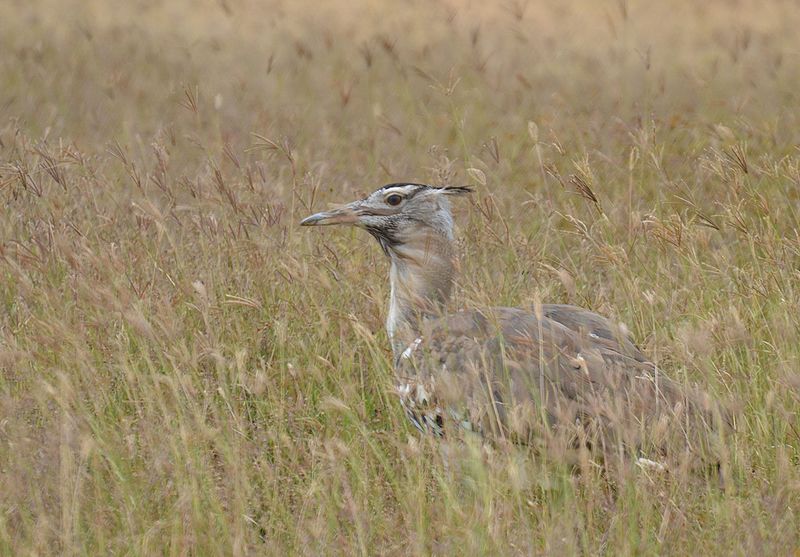
Bustards are large, terrestrial birds that inhabit dry grassland areas and the steppes of the Old World. They range from 40-150 cm in length and belong to the family Otididae.
Bustards have an omnivorous diet consisting of leaves, buds, seeds, fruit as well as small vertebrates and invertebrates.
These birds usually live a solitary life but can be seen gathering around water sources or food during certain times of year such as mating season.
Due to their large size they are vulnerable to predation by foxes or other animals which is why they tend to remain alert at all times.
When in open spaces while relying on camouflage for protection against predators when out in tall vegetation coverings.Scientific classification:
| Kingdom | Animalia |
| Phylum | Chordata |
| Class | Aves |
| Clade | Otidimorphae |
| Order | Otidiformes Wagler, 1830 |
| Family | Otididae Rafinesque, 1815 |
Also Featured In: Common Birds in India, Turkey Birds You Should Know
2. Western Meadowlark
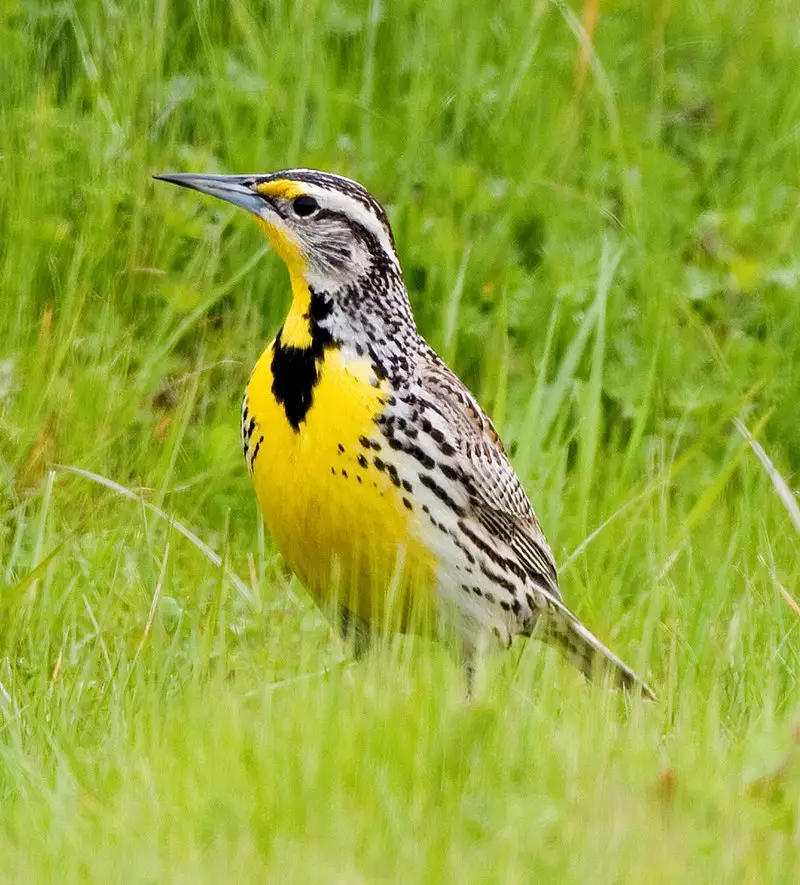
The western meadowlark is a medium-sized icterid bird native to North America. It has a distinct yellow breast with black and white patches, making it easy to spot in open grasslands.
Its diet consists of mostly bugs but also includes seeds and berries. The western meadowlark’s call is unique – its sound described as flute-like or watery, differentiating it from the similar eastern meadowlark species.
When nesting season arrives, they build their nests on the ground near shrubs or low trees in areas like fields and pastures.
This beautiful songbird adds life to our open lands with its melodious tunes.Scientific classification:
| Kingdom | Animalia |
| Phylum | Chordata |
| Class | Aves |
| Order | Passeriformes |
| Family | Icteridae |
| Genus | Sturnella |
| Species | S. neglecta |
Also Featured In: Most Common United States Birds, Most Common Songs Birds that Live around You
3. Northern Bobwhite
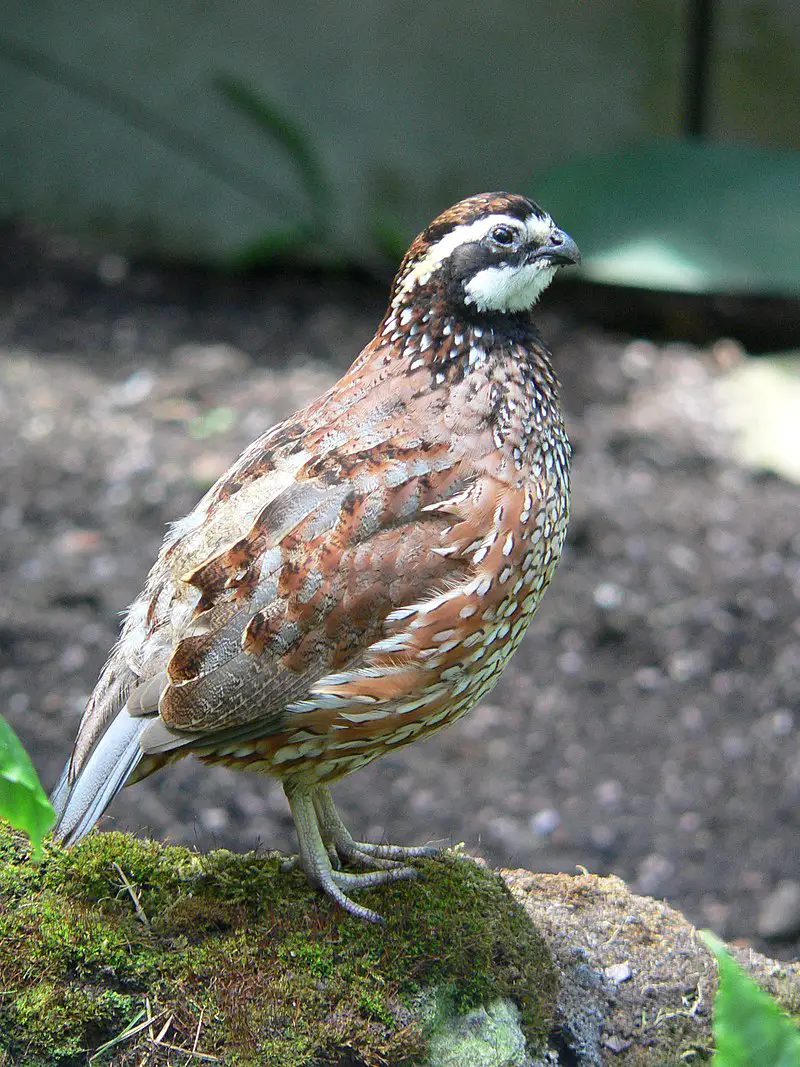
The Northern bobwhite is a ground-dwelling bird native to parts of the Americas, with introduced populations elsewhere in the world.
It belongs to the New World quail family and has a distinctive call that can be heard during mating season or when their territory is threatened.
They have mottled brown plumage which helps them blend into their natural habitats such as grasslands, wooded areas and open fields.
The male birds are slightly larger than females and they feed on small insects, seeds and plants.
These birds form monogamous breeding pairs that stay together throughout most of the year raising several broods each year until migrating south for winter months.
Though declining due to habitat loss, these resilient little birds can still be found living in many places across North America.Scientific classification:
| Kingdom | Animalia |
| Phylum | Chordata |
| Class | Aves |
| Order | Galliformes |
| Family | Odontophoridae |
| Genus | Colinus |
| Species | C. virginianus |
Also Featured In: Small Birds that Commonly Found in Ohio, Small Birds of Pennsylvania
4. Burrowing Owl
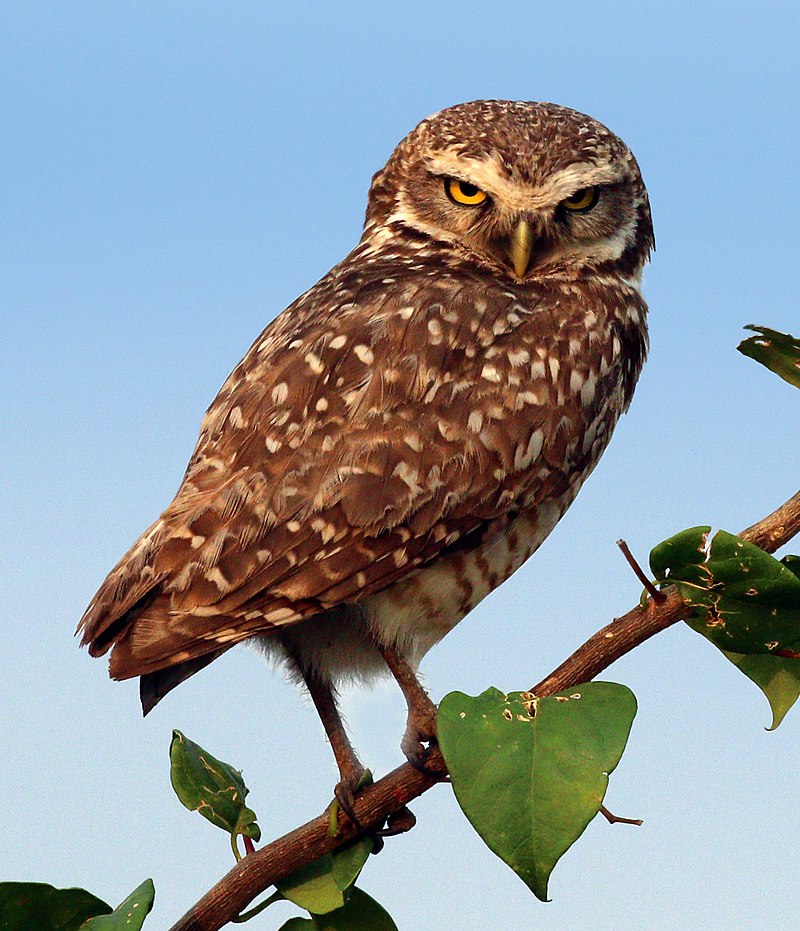
The Burrowing Owl is a small, long-legged owl found in open landscapes throughout North and South America. They are typically seen in grasslands, rangelands, agricultural areas or deserts with low vegetation.
Unlike most owls they nest and roost underground by taking over burrows made by other animals such as prairie dogs.
Their diet consists of insects, rodents and sometimes lizards or frogs that they hunt during the night time hours when their eyesight is sharpest.
This species faces threats due to habitat loss caused by human development but conservation efforts have been successful at reversing some of this damage allowing for populations to remain stable into the future despite these pressures.Scientific classification:
| Kingdom | Animalia |
| Phylum | Chordata |
| Class | Aves |
| Order | Strigiformes |
| Family | Strigidae |
| Genus | Athene |
| Species | A. cunicularia |
Also Featured In: Beautiful Brazilian Birds, Birds that Live in the Deserts
5. Short-Eared Owl
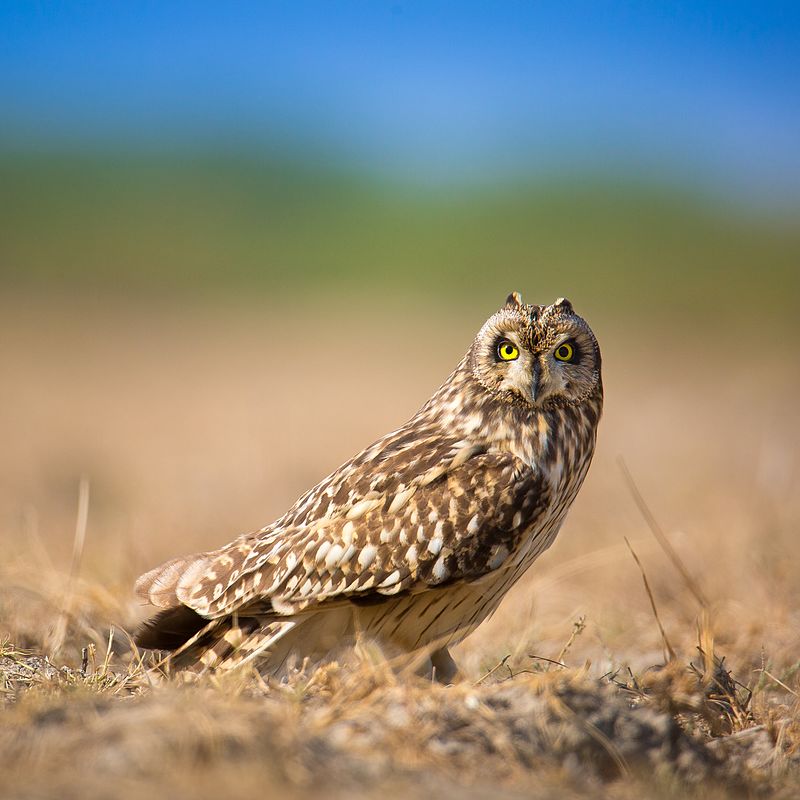
The Short-eared Owl is a species of owl belonging to the genus Asio, commonly known as ‘Eared Owls’. It has short tufts resembling mammalian ears that may or may not be visible.
When threatened they will display their tufts defensively; however these very short tufts are usually hard to spot.
This bird can be found in grassland habitats across much of the world and hunt mainly small mammals such as voles at night by swooping low over the ground from perches like trees and posts.
They also take other prey including birds, amphibians, reptiles and insects when available.
During breeding season males can often been seen performing aerial displays with claps of its wings while hovering above potential mates on territories it defends fiercely against intruders including humans.Scientific classification:
| Kingdom | Animalia |
| Phylum | Chordata |
| Class | Aves |
| Order | Strigiformes |
| Family | Strigidae |
| Genus | Asio |
| Species | A. flammeus |
Also Featured In: Egyptian Birds, Galapagos Birds You Should Know
6. Eastern Meadowlark
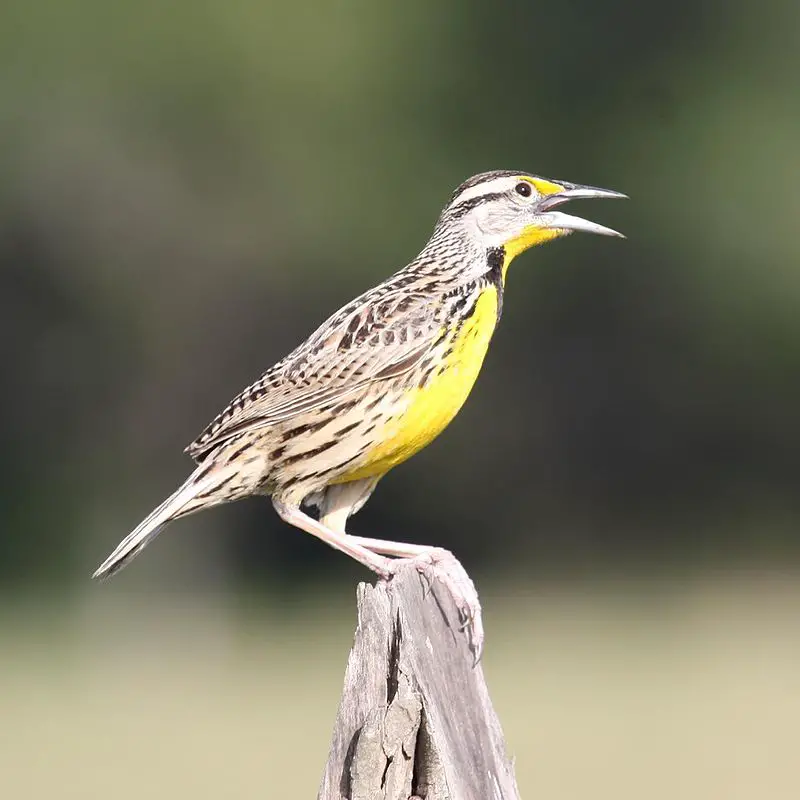
The Eastern meadowlark is a medium-sized blackbird, found from eastern North America to northern South America.
It used to be considered the same species as the Western meadowlark but has since been separated into its own distinct species.
The bird is mainly brown with yellow underparts and an orange patch on its throat; it also has white wing bars which can be seen in flight.
Its song consists of a series of musical whistles followed by gurgling notes at the end, earning them their nickname “rainmaker” birds because they are believed to bring rain if heard singing during dry weather.
These beautiful birds feed mostly on insects, seeds and other plant material while nesting amongst grasses or low shrubs near open fields where there’s plenty of food available for them.Scientific classification:
| Kingdom | Animalia |
| Phylum | Chordata |
| Class | Aves |
| Order | Passeriformes |
| Family | Icteridae |
| Genus | Sturnella |
| Species | S. magna |
Also Featured In: Most Common Types of Birds Found in Cuba, Yellow Connecticut Birds
7. Savannah Sparrow
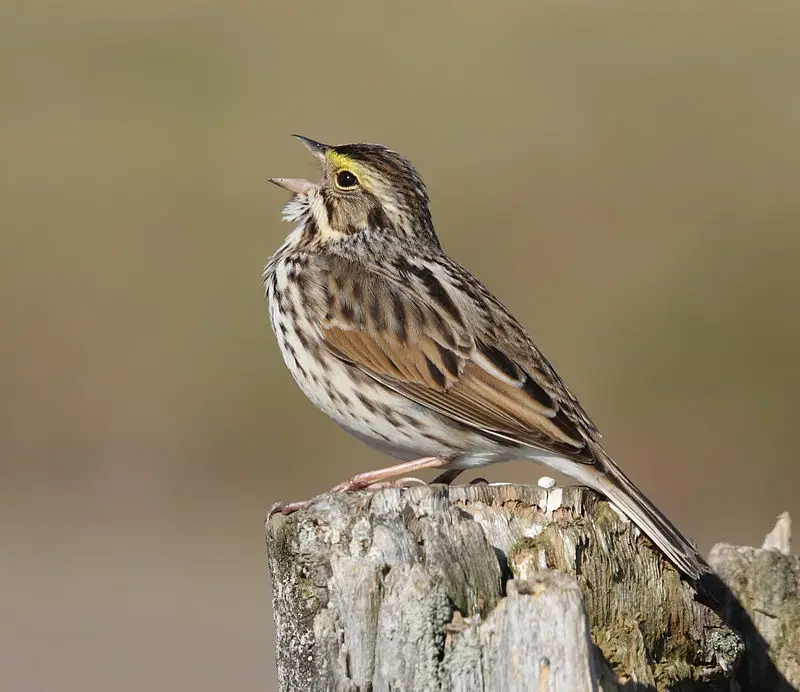
The Savannah Sparrow is a small, New World sparrow. It’s the only bird in its genus, Passerculus and can be distinguished from other similar species by comparing mtDNA NADH dehydrogenase subunit 2 and 3 sequences.
Its closest relative is the Ipswich sparrow which was once considered an independent species but now it’s seen as being part of the same family as this bird.
The male has yellowish-brown upper parts with darker streaks, white underparts with dark streaking on breast and flanks, orange wash to face sides plus two bold wingbars.
Females are slightly duller than males with less distinct markings on wings yet still showing some degree of variation between individuals across their range.Scientific classification:
| Kingdom | Animalia |
| Phylum | Chordata |
| Class | Aves |
| Order | Passeriformes |
| Family | Passerellidae |
| Genus | Passerculus |
| Species | P. sandwichensis |
Also Featured In: Sparrows Species, Savanna Birds You Need to See
8. Lincoln’s Sparrow
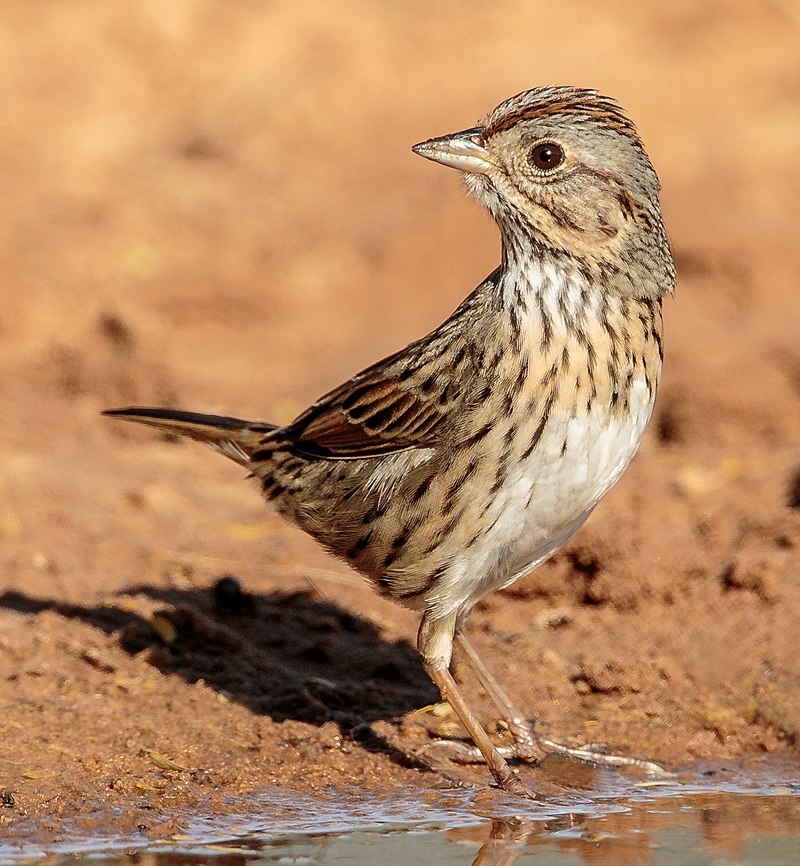
Lincoln’s sparrow is a small passerine bird native to North America. It has brown upperparts, white underparts and a distinctive light-gray eyebrow line above its eyes.
The species usually stays hidden in thick ground cover but can be identified by its sweet, wrenlike song.
Lincoln’s sparrow belongs to the genus Melospiza along with two other species: the Song Sparrow (M.melodia) and Swamp Sparrow (M. georgiana).
This elusive yet beautiful bird inhabits well-covered areas such as wetlands, grasslands, shrubland valleys, pastures and open woodlands across most of Canada and parts of northern USA throughout summer months before migrating south for winter season.Scientific classification:
| Kingdom | Animalia |
| Phylum | Chordata |
| Class | Aves |
| Order | Passeriformes |
| Family | Passerellidae |
| Genus | Melospiza |
| Species | M. lincolnii |
Also Featured In: Birds You’ll Find in South Texas , Birds in Pacific Northwest
9. Grasshopper Sparrow
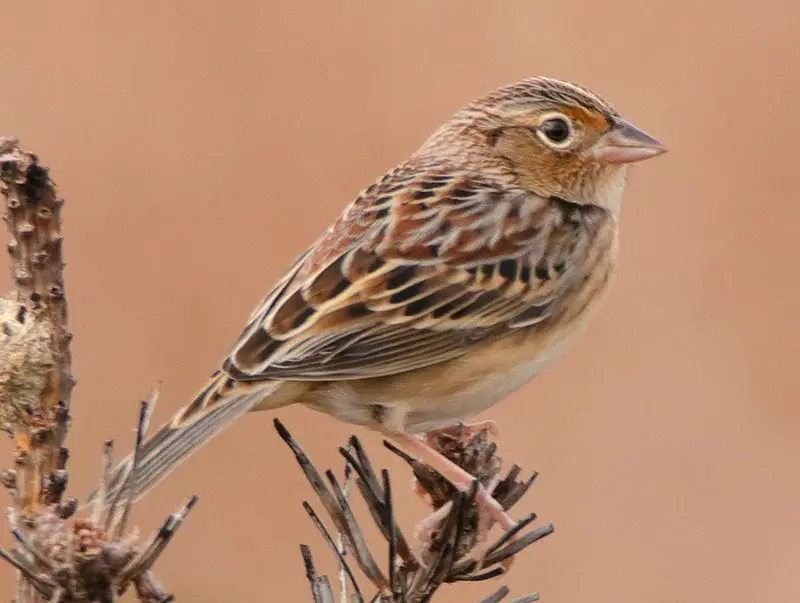
The Grasshopper Sparrow is a small sparrow from the New World. It inhabits grasslands and prairies, but will also colonize reclaimed grassland or crop fields.
This species prefers large areas of open grassland where it avoids trees and shrubs.
Its diet consists mainly of seeds, insects and spiders which it looks for on the ground while walking or running with occasional short flights to find food in tall vegetation.
The breeding season begins in late April when males sing their characteristic buzzy song to attract females; pairs build nests either low on the ground or aboveground among weeds and other cover plants.
These birds are key members of their native ecosystems as they control insect populations by feeding upon them as well as dispersing seed through consuming fruits.Scientific classification:
| Kingdom | Animalia |
| Phylum | Chordata |
| Class | Aves |
| Order | Passeriformes |
| Family | Passerellidae |
| Genus | Ammodramus |
| Species | A. savannarum |
Also Featured In: Birds that You’ll Find in Puerto Rico, Birds that Live in Manitoba
10. Field Sparrow
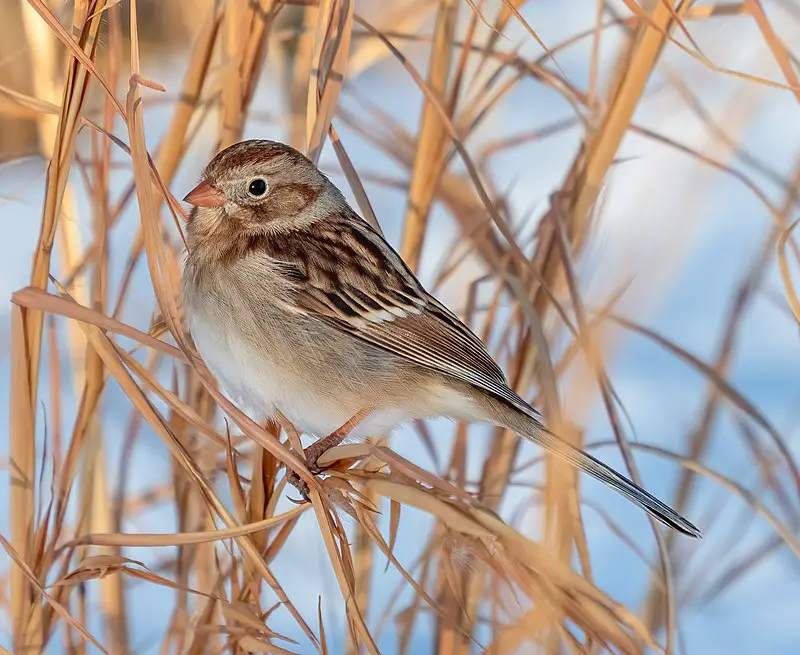
The Field Sparrow is a small bird that can be found across North America. It has a gray head with rust-colored crown and white eye-ring, while its upper parts are brown streaked with black and buff feathers.
Its breast is buff colored, belly white, and the tail forked. There are two color morphs of this species; one being darker in color than the other.
They measure about 140 mm long and weigh 12.5 grams on average; feeding primarily on seeds from grasses or weeds as well as insects during summer months.
The field sparrow’s song is often described as sweet whistles which it sings from an exposed perch like fence posts or trees tops.Scientific classification:
| Kingdom | Animalia |
| Phylum | Chordata |
| Class | Aves |
| Order | Passeriformes |
| Family | Passerellidae |
| Genus | Spizella |
| Species | S. pusilla |
Also Featured In: Autumn Birds You Should Know, Small Kentucky Birds
11. LeConte’s Sparrow
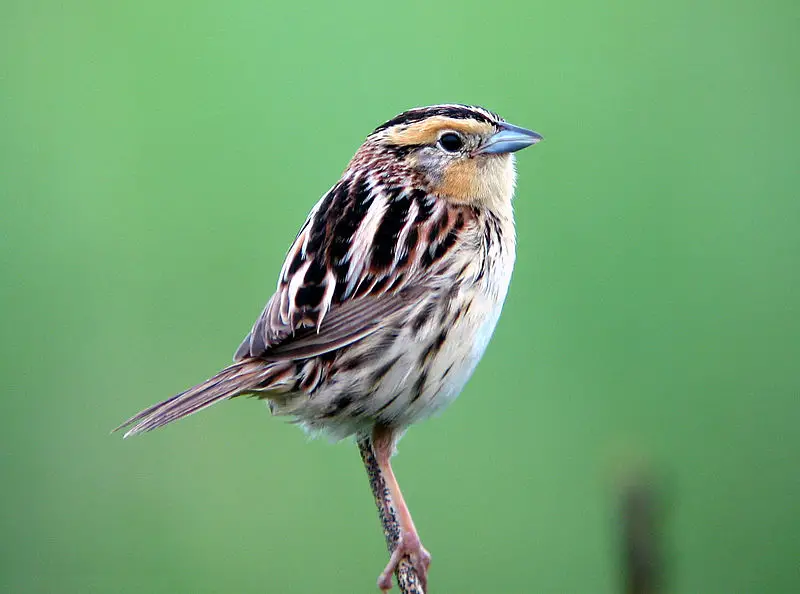
LeConte’s sparrow is a small, secretive bird found in North America. It prefers to stay on the ground and can often be seen scurrying through tall grasses when disturbed.
These birds are notoriously difficult to spot and usually only flush at close distances of 1-3m.
They rarely take flight and instead opt for running away or hiding within vegetation if encountered by predators or humans alike.
Their diet consists mainly of seeds, fruits, insects and other invertebrates which they search for on the ground with their long bills adapted especially suited for this purpose.Scientific classification:
| Kingdom | Animalia |
| Phylum | Chordata |
| Class | Aves |
| Order | Passeriformes |
| Family | Passerellidae |
| Genus | Ammospiza |
| Species | A. leconteii |
12. Nelson’s Sparrow

Nelson’s sparrow is a small New World sparrow named after the American naturalist, Edward William Nelson. It was once considered to be part of a single species known as the sharp-tailed sparrow.
These birds have brownish upperparts with gray on their crowns and wings that are edged in white.
They have buffy underparts which become paler towards their bellies and they feature two prominent stripes along either side of their throats.
Males tend to be darker than females, particularly during breeding season when they can show chestnut patches on their heads and necks as well as black streaks down its flanks.
This bird prefers wet areas for nesting such as marshes, swamps or grasslands near water where it feeds mainly on insects but also consumes seeds from various plants including wild rice grains found in shallow waters nearby its habitats.Scientific classification:
| Kingdom | Animalia |
| Phylum | Chordata |
| Class | Aves |
| Order | Passeriformes |
| Family | Passerellidae |
| Genus | Ammospiza |
| Species | A. nelsoni |
13. Dickcissel
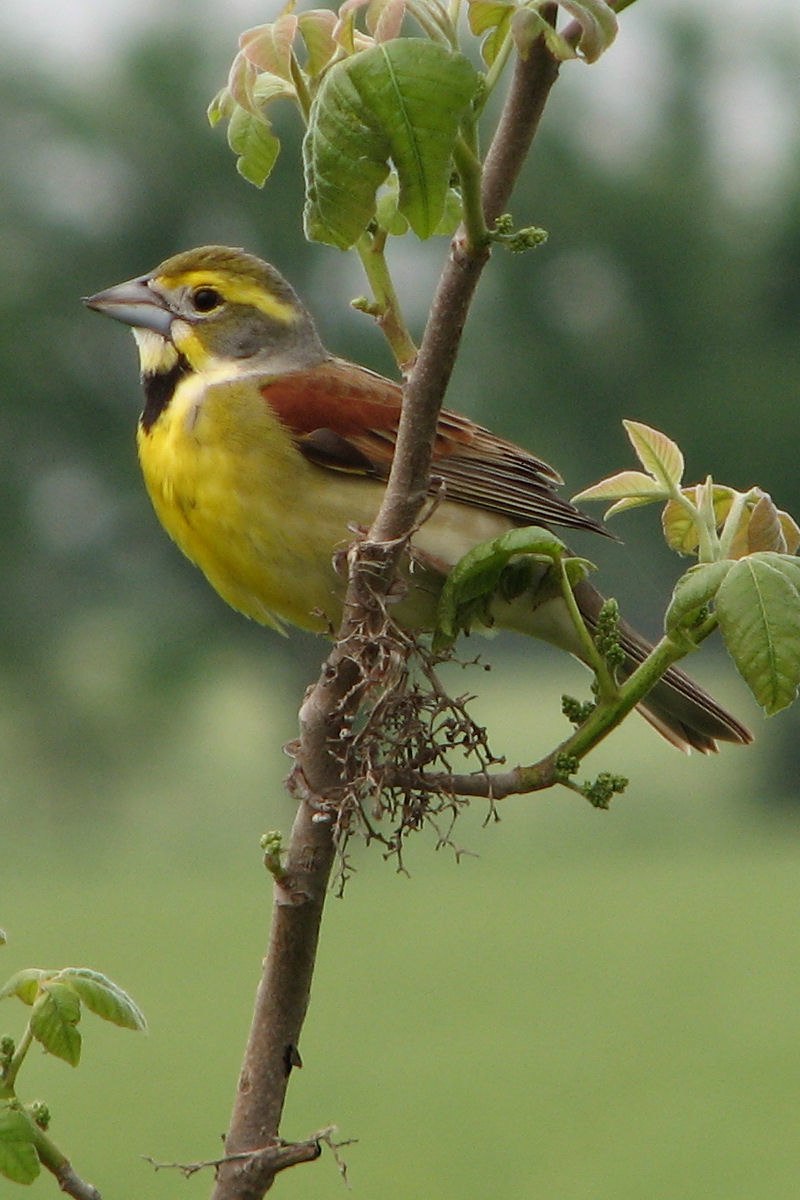
The Dickcissel is a small migratory bird belonging to the Cardinalidae family. It breeds in grasslands of the Midwestern US, and winters in Central America, northern Colombia and Venezuela.
Being the only member of its genus Spiza, it stands out from other birds with its distinctive song that sounds like “dick-sis-sel”.
With a light brown body and black streaks on its wings as well as chestnut colored shoulders and crowns, these birds are quite attractive to watch.
They also have short bills which they use while foraging through tall prairie vegetation or searching around fence posts for insects.
Although not endangered yet, their population has declined due to loss of habitat caused by human development so conservation efforts should be taken up soon.Scientific classification:
| Kingdom | Animalia |
| Phylum | Chordata |
| Class | Aves |
| Order | Passeriformes |
| Family | Cardinalidae |
| Genus | Spiza Bonaparte, 1824 |
| Species | S. americana |
Also Featured In: Common Birds of Prairie, Red Birds You’ll See in Oklahoma
14. Henslow’s Sparrow
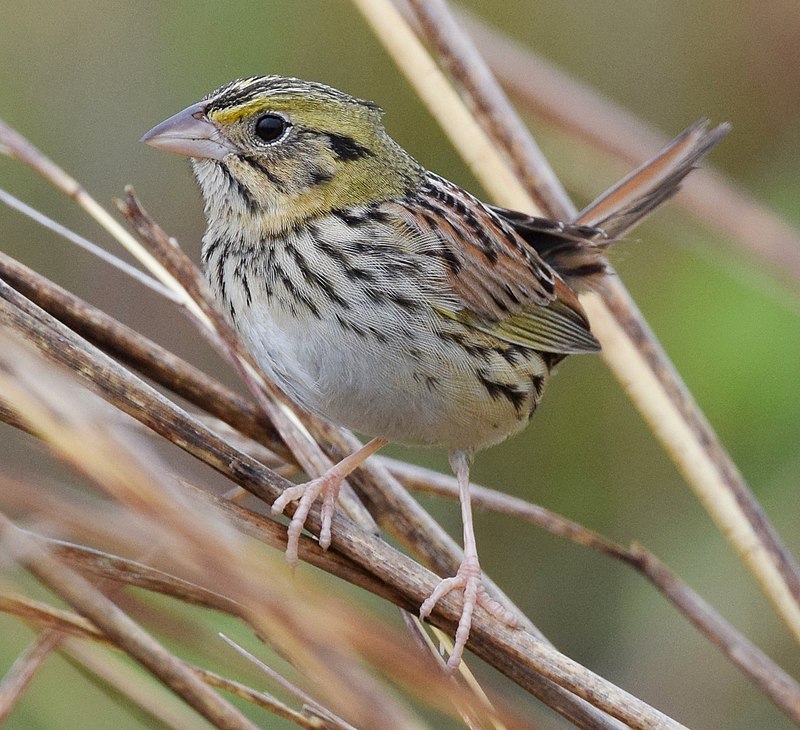
Henslow’s sparrow is a small passerine bird in the family Passerellidae named after John Stevens Henslow.
It has streaked brown upperparts, light brown breast with streaks, white belly and throat, and a pale stripe on its crown.
It also has yellowish-brown wings with black tips, long tail feathers that have central stripes of grey or rufous coloration edged by white lines.
Male birds are slightly larger than females and may sport brighter plumage during mating season when they sing to attract mates from nearby shrubbery or grassland habitats where they usually reside in pairs or groups of up to four individuals.
Despite their shyness around humans these birds provide important environmental services as part of food webs across North America due to their insectivorous diet which helps control pest populations near farms and gardens.Scientific classification:
| Kingdom | Animalia |
| Phylum | Chordata |
| Class | Aves |
| Order | Passeriformes |
| Family | Passerellidae |
| Genus | Centronyx |
| Species | C. henslowii |
15. Lark Bunting
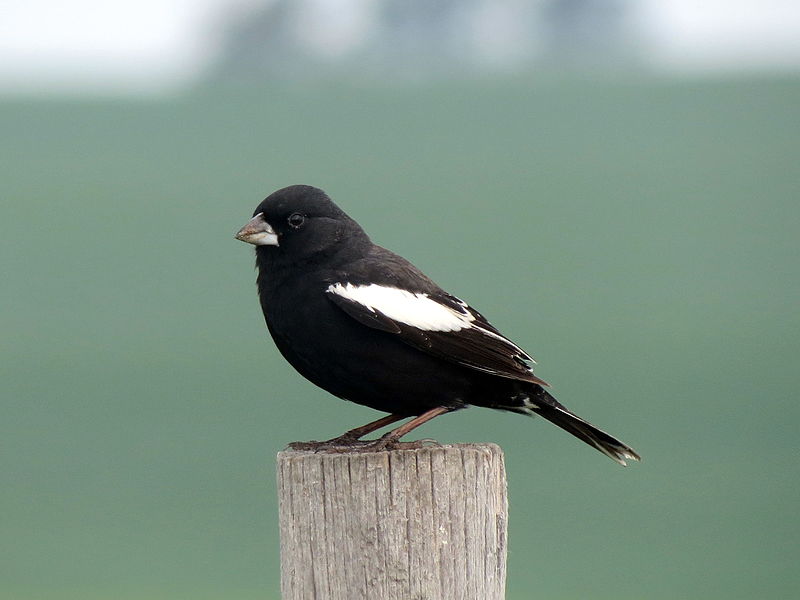
The Lark Bunting is a medium-sized sparrow native to central and western North America. It was designated the state bird of Colorado in 1931, making it an important part of local culture.
The species is monotypic; meaning it’s not related to any other genera out there.
J.K Townsend first described this fascinating bird back in 1837 after finding a specimen during his travels with Major Stephen H Long on their expedition up the Platte River valley through Nebraska and Wyoming into South Dakota.
This friendly little creature has black feathers at its crown, grey wings and tail, white breast streaked with black patches – all contributing together to create one colorful picture.
Its habitat ranges from grasslands across prairies as well as cultivated farms where they usually nest low down on ground level or within shrubs for safety purposes.
With such beautiful features along with its cheerful chirps that can be heard throughout springtime mornings, no wonder why this majestic avian holds so many admirers amongst nature lovers everywhere.Scientific classification:
| Kingdom | Animalia |
| Phylum | Chordata |
| Class | Aves |
| Order | Passeriformes |
| Family | Passerellidae |
| Genus | Calamospiza Bonaparte, 1838 |
| Species | C. melanocorys |
Also Featured In: Birds That Live in Colorado, Black And White Birds You Don’t Know About
16. Baird’s Sparrow

The Baird’s Sparrow is a small, migratory bird native to the United States, Canada and Mexico.
It has a yellow-brown face with subtle black markings and brown streaks on its chest that are unique among other sparrows.
Its wings are dark grayish-brown edged with white specks on the secondaries while its tail feathers have faint tan or grey barring.
The underparts of this species range from pale buffy to pinkish in coloration depending on their age and sex.
Overall it is an attractive little songbird which can be found living amongst low shrubs in open grasslands near water sources during migration season.
When not migrating these birds will usually move into drier habitats such as sagebrush steppes for nesting purposes where they build cup shaped nests lined with dried vegetation material close to ground level within plant cover such as long grasses and ditches.Scientific classification:
| Kingdom | Animalia |
| Phylum | Chordata |
| Class | Aves |
| Order | Passeriformes |
| Family | Passerellidae |
| Genus | Centronyx |
| Species | C. bairdii |
17. Botteri’s Sparrow
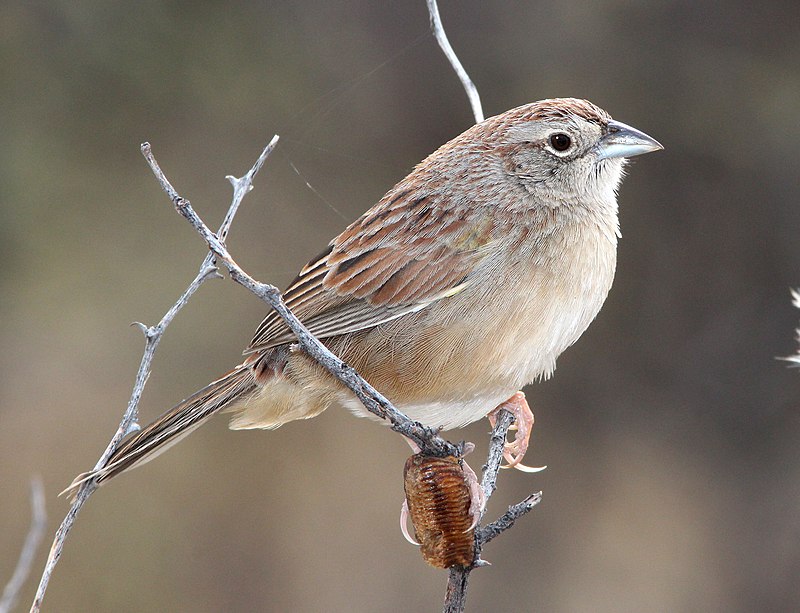
Botteri’s sparrow is a medium-sized bird found mainly in Mexico, with its breeding range extending into southeastern Arizona and southern Texas.
Despite the presence of small non-migratory populations there, this species faces threats due to habitat loss.
It was not seen in Arizona between the 1890s and mid-20th century, although some have since returned thanks to conservation efforts aiming at preserving their natural habitats.
They are mostly grayish brown birds that feature white stripes on their heads and wings, as well as whitish or pale yellow bellies which make them easily recognizable among other passerines.Scientific classification:
| Kingdom | Animalia |
| Phylum | Chordata |
| Class | Aves |
| Order | Passeriformes |
| Family | Passerellidae |
| Genus | Peucaea |
| Species | P. botterii |
18. Cassin’s Sparrow
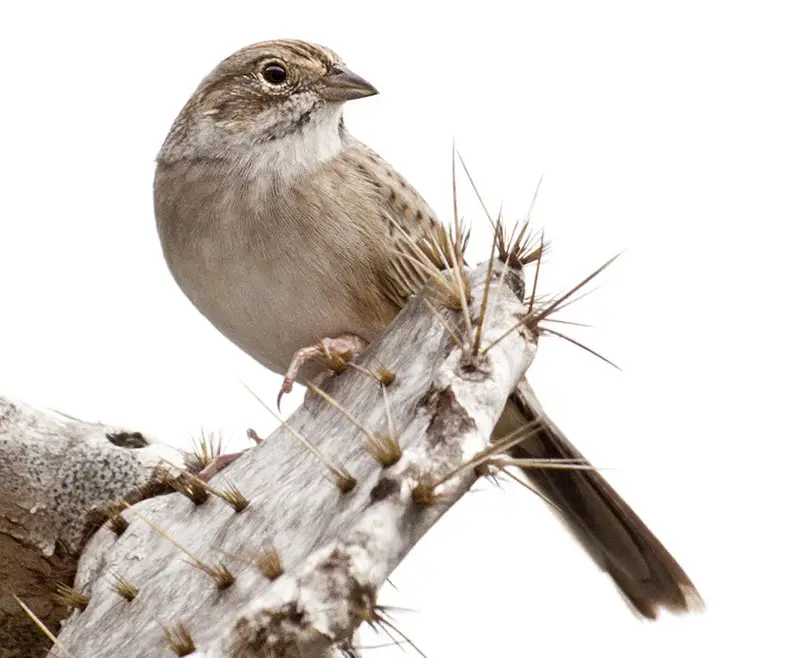
Cassin’s sparrow is a medium-sized passerine bird that inhabits the western regions of Nebraska and extends to north-central Mexico. It was originally described in 1852 by Samuel W.
Woodhouse, who gave it its species name in honor of John Cassin, an ornithologist from Philadelphia.
This sparrow is mainly brown with white streaks on its chest and belly area giving it a distinctive look amongst other birds within its range.
They usually live in grasslands or shrubby areas where they feed on seeds, insects and berries found there during different times of the year enough for them to survive.
Their song consists of several thin notes repeated rapidly which makes them stand out among others due to their unique call making them easily recognizable even if not seen directly.Scientific classification:
| Kingdom | Animalia |
| Phylum | Chordata |
| Class | Aves |
| Order | Passeriformes |
| Family | Passerellidae |
| Genus | Peucaea |
| Species | P. cassinii |
19. Chestnut-Collared Longspur
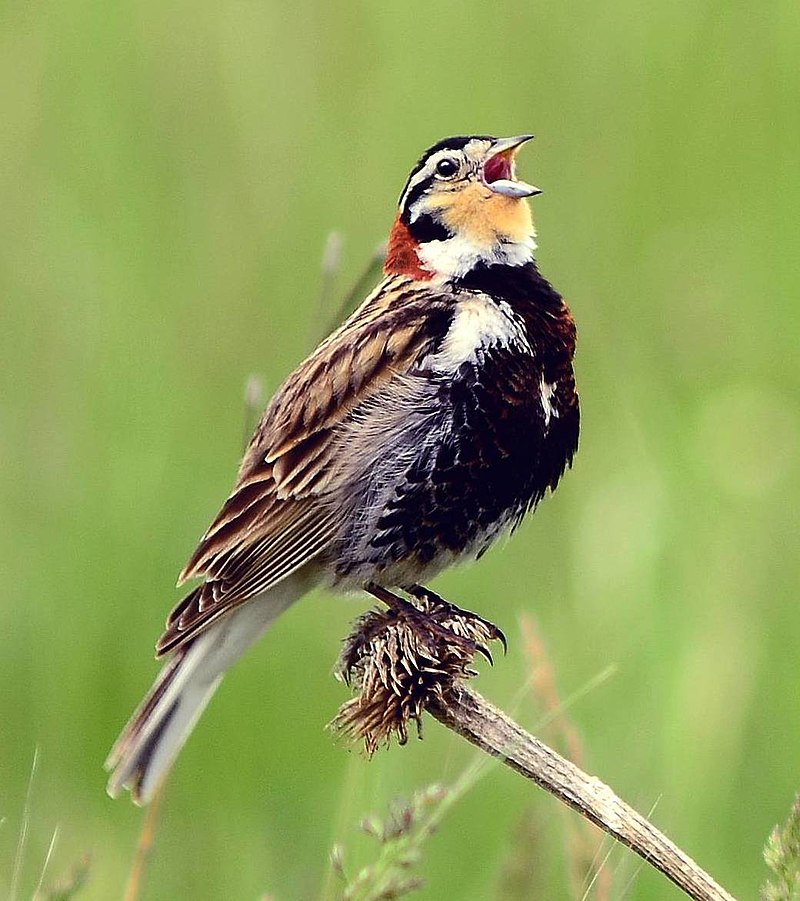
The Chestnut-collared Longspur is a small, seed-eating bird that primarily inhabits prairie habitats in Canada and the northern United States.
It has a short conical bill, a streaked back and white tail with dark markings along its edges.
During the breeding season they move northward to their nesting grounds while during winter they migrate southwards towards Mexico and parts of US where temperatures are more favourable for survival.
They form flocks when migrating or searching for food which can contain up to 50 birds at any given time.
The diet of this species consists mainly of seeds but also includes insects such as grasshoppers, beetles etc., making them an important part of the local ecosystem by controlling insect populations.
These little birds may be hard to spot due to their elusive nature but if you’re lucky enough you might spot one on your next visit outdoors.Scientific classification:
| Kingdom | Animalia |
| Phylum | Chordata |
| Class | Aves |
| Order | Passeriformes |
| Family | Calcariidae |
| Genus | Calcarius |
| Species | C. ornatus |
20. Sedge Wren
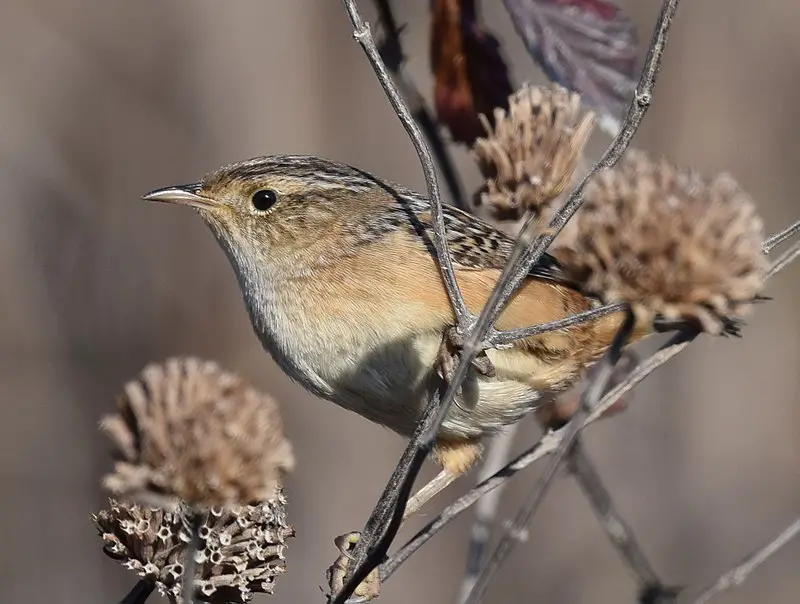
The Sedge Wren is a small, secretive bird found in North America. It prefers wet grasslands and meadows where it lives among the tall grasses and sedges, feeding on insects.
Formerly considered conspecific with the non-migratory Grass Wren of Central and South America, this species has been reclassified as its own unique species due to DNA differences between them.
However, they still share similar traits such as their brownish coloration with streaks along their back.
The Sedge Wren nests in dense vegetation which provides safety from predators while also providing plenty of food for the insectivorous birds during breeding season.
Their song consists mostly of short phrases repeated several times throughout each day making them easy to identify by sound alone.Scientific classification:
| Kingdom | Animalia |
| Phylum | Chordata |
| Class | Aves |
| Order | Passeriformes |
| Family | Troglodytidae |
| Genus | Cistothorus |
| Species | C. stellaris |
Also Featured In: Wrens Species, Small Birds that Live in Michigan Birds
21. Ferruginous Hawk
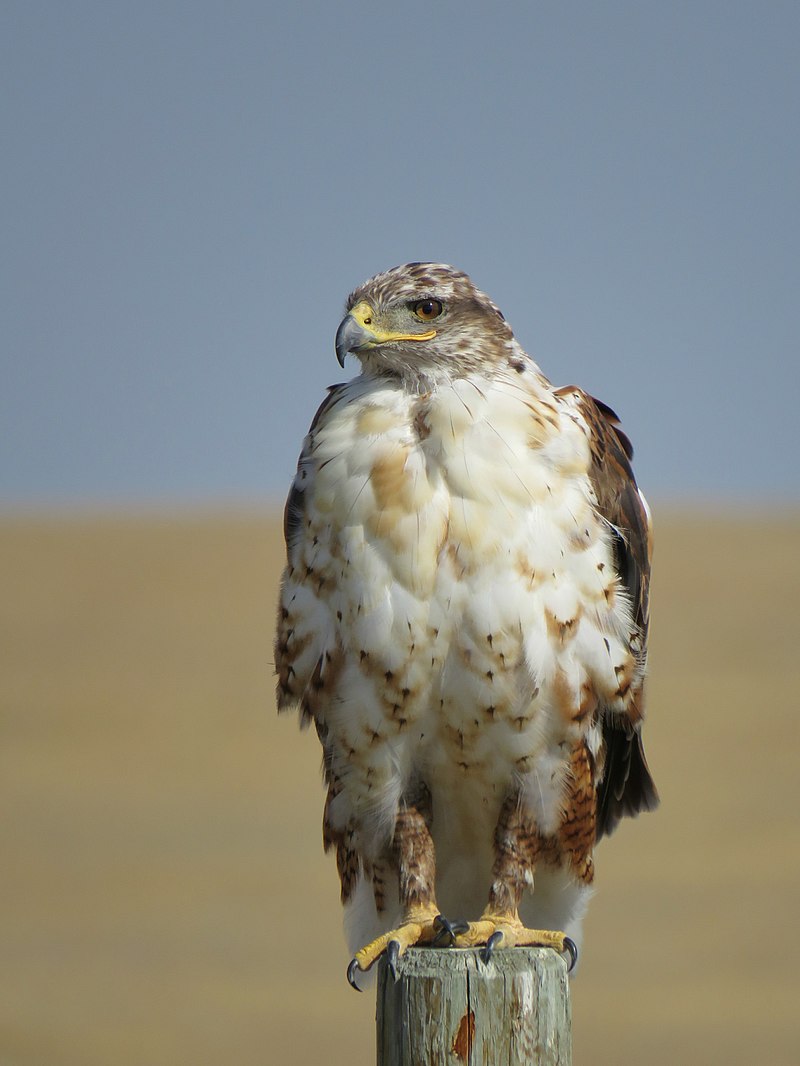
The Ferruginous Hawk is a large bird of prey belonging to the Buteo family, and colloquially known as the ‘Ferrugineous Rough-Leg’.
Its name has been derived from Latin terms with ‘buteo’ meaning buzzard and ‘regalis’ meaning royal.
The hawk’s feathers are rust coloured or ferruginous in appearance, hence its common name.
It preys on small mammals like pocket gophers, ground squirrels and jackrabbits; reptiles such as snakes also form part of their diet.
They inhabit open plains and shrublands where there is plenty of food available for them to hunt.
When threatened they may fly away quickly but if cornered can become aggressive so caution must be taken when observing them closely.Scientific classification:
| Kingdom | Animalia |
| Phylum | Chordata |
| Class | Aves |
| Order | Accipitriformes |
| Family | Accipitridae |
| Genus | Buteo |
| Species | B. regalis |
Also Featured In: Utah Birds, Large Birds Live in Idaho
22. Greater Prairie Chicken
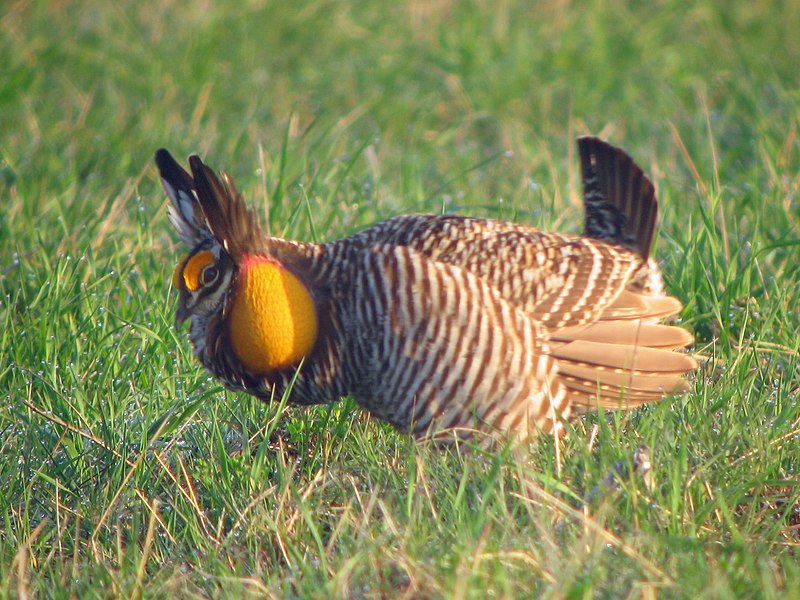
The Greater Prairie Chicken is a unique bird belonging to the grouse family. It was once extremely abundant across North America, with flocks seen in prairies and grasslands.
Sadly, because of habitat loss its population has drastically declined over time and it’s now considered endangered or extirpated in many areas.
To help ensure sustainability for these remaining populations, conservation efforts are being made.
The most remarkable feature of this species is their mating ritual called “booming”.
During breeding season males gather together on traditional booming grounds where they dance vigorously while producing loud sounds through inflatable air sacs located on either side of their necks – quite an impressive display.
Let us all work together to protect our natural world so that we can continue to enjoy these special creatures’ beauty and grace for generations to come.Scientific classification:
| Kingdom | Animalia |
| Phylum | Chordata |
| Class | Aves |
| Order | Galliformes |
| Family | Phasianidae |
| Genus | Tympanuchus |
| Species | T. cupido |
Also Featured In: Nebraska Birds,
23. Horned Lark
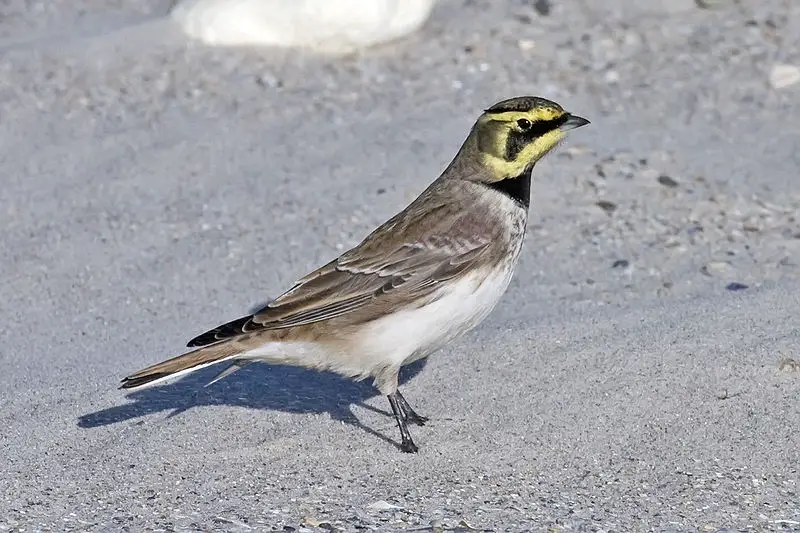
The Horned Lark, known as the Shore Lark in Europe and North America, is a species of lark belonging to the family Alaudidae.
It can be found across the northern hemisphere and has been classified under its Latin name Eremophila alpestris which means “of high mountains”, referring to its prevalence in mountainous areas like the Alps.
This bird is distinguished by two black tufts or ‘horns’ on either side of its head. Its size varies from 11-13 cm long with brown upperparts and pale whitish underparts sporting darker streaks throughout them both.
With an adaptation for ground nesting, it builds nests out of grasses lined with feathers near open fields where food sources are abundant such as insects, grains and seeds giving this species great potential for survival even when conditions may become harsh during winter months.Scientific classification:
| Kingdom | Animalia |
| Phylum | Chordata |
| Class | Aves |
| Order | Passeriformes |
| Family | Alaudidae |
| Genus | Eremophila |
| Species | E. alpestris |
Also Featured In: birds of Vermont, Ukrainian Birds You Should Know
24. Long-Billed Curlew
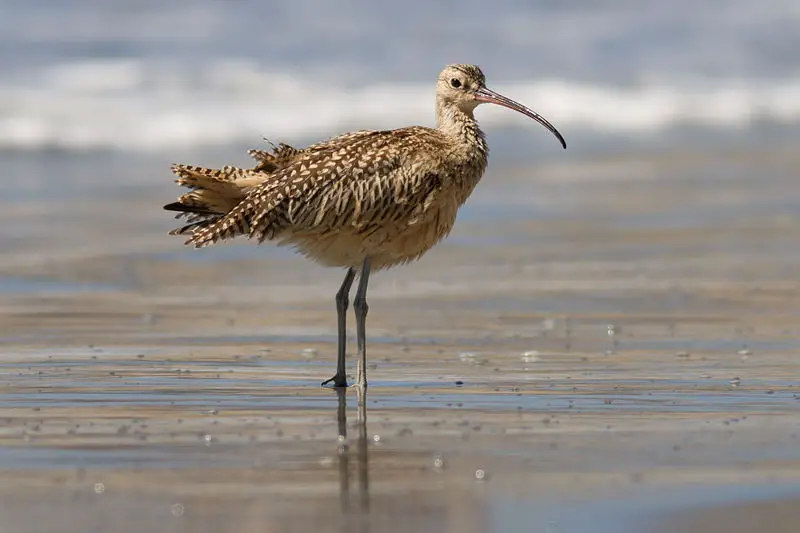
The Long-billed Curlew is an impressive shorebird, 50 to 65 cm in length and boasting a bill that can be up to 10cm long – hence its name
This species breeds in the central and western areas of North America before migrating south for winter.
Its distinctive call has earned it nicknames like “sickle bird” or “candlestick bird”. They are omnivorous, eating insects, spiders as well as plants both on land and in the water.
In addition they also have been known to scavenge carrion from time to time.
These magnificent birds inhabit coastal regions such as mudflats, marshes and beaches making them easy enough spot if you know their habitat.Scientific classification:
| Kingdom | Animalia |
| Phylum | Chordata |
| Class | Aves |
| Order | Charadriiformes |
| Family | Scolopacidae |
| Genus | Numenius |
| Species | N. americanus |
Also Featured In: birds of Idaho, Birds That Live In Humboldt Bay
25. Lesser Prairie Chicken
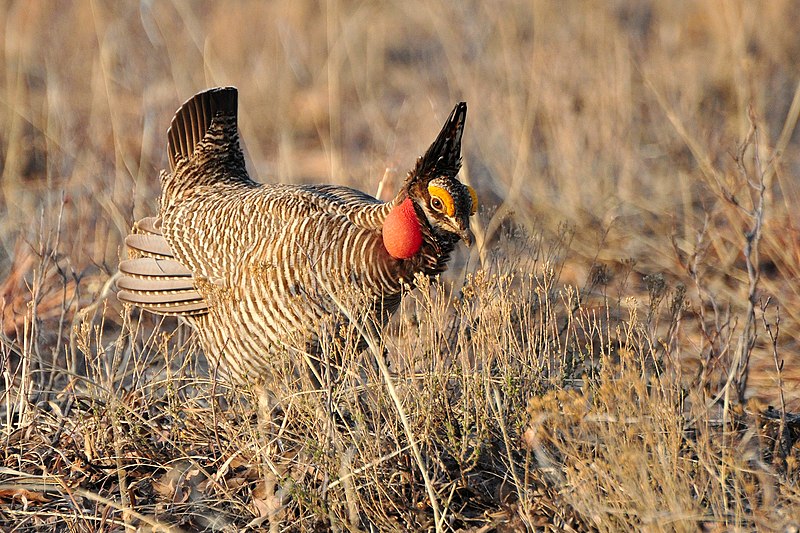
The Lesser Prairie Chicken is a species of grouse found in the North American Midwest. It is smaller and paler than its relative, the Greater Prairie Chicken.
Adults measure between 15 to 16 inches long and weigh about 22-29 ounces on average. They are distinguished by their white and brown stripes.
Currently, around half of the population lives in western Kansas with some scattered populations across Colorado, Oklahoma, New Mexico and Texas.
This bird’s numbers have been declining due to loss of habitat caused by farming practices as well as energy development activities that take away from its grassland home environment which it needs for food sources such as insects or seeds that can be found there.
Conservation efforts must continue if we want to keep this beautiful native species alive.Scientific classification:
| Kingdom | Animalia |
| Phylum | Chordata |
| Class | Aves |
| Order | Galliformes |
| Family | Phasianidae |
| Genus | Tympanuchus |
| Species | T. pallidicinctus |
Also Featured In: birds of New Mexico,
26. Sharp-Tailed Grouse
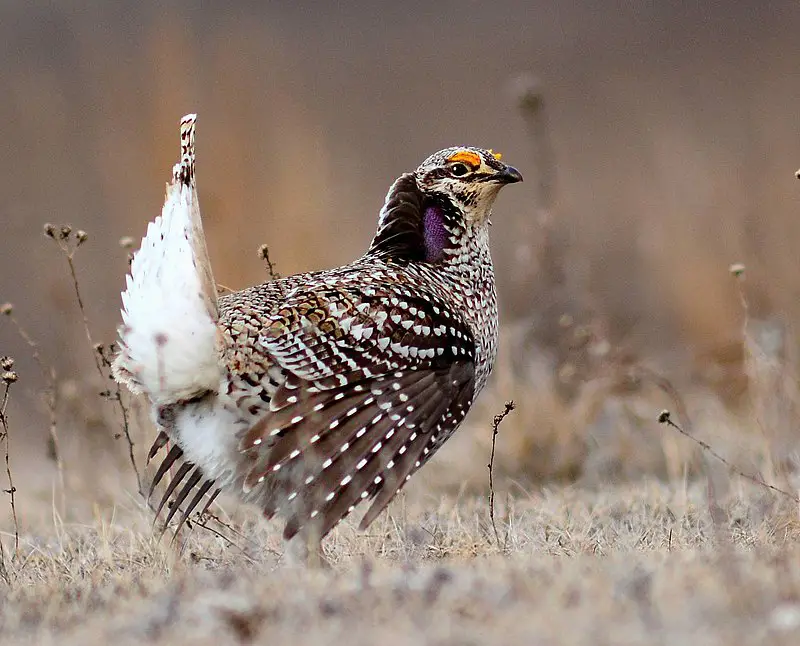
The Sharp-tailed Grouse is a medium-sized prairie grouse found in Alaska, Canada and parts of the U.S. It is known for its sharp tail feathers which are used to communicate with other birds during courtship displays.
The male typically has greyish brown plumage, yellow or reddish eyes and black barring on its neck and wings while the female tends to have more muted colours but still possesses a distinct “sharp” tail feather pattern.
This bird eats mostly grasses, seeds and insects as well as some fruits when available.
It nests on the ground usually near trees or shrubs where it will remain until breeding season begins in late spring/early summer months where males perform their elaborate mating dances with many females at once.
The Sharp-tailed Grouse is an iconic species of North America being named provincial bird of Saskatchewan province in Canada highlighting its importance within this region’s ecosystems.Scientific classification:
| Kingdom | Animalia |
| Phylum | Chordata |
| Class | Aves |
| Order | Galliformes |
| Family | Phasianidae |
| Genus | Tympanuchus |
| Species | T. phasianellus |
Also Featured In: birds of North Dakota, Common Birds in Saskatchewan
27. Sprague’s Pipit

Sprague’s pipit is a small songbird found in the short- and mixed-grass prairies of North America.
It migrates to the southwestern United States and northern Mexico for winter, displaying an unusual behavior: it sings high up in the sky like a goldfinch or skylark.
The brownish bird has white streaks on its back, black markings on its head, yellow legs, and a thin bill. Its diet consists mainly of insects but also includes seeds from grasses.
During breeding season they make long flights while singing their loud songs which can be heard even over large distances.
Sprague’s Pipits are unfortunately becoming rarer due to habitat loss caused by human activities such as conversion of native prairie into cropland or pastureland.Scientific classification:
| Kingdom | Animalia |
| Phylum | Chordata |
| Class | Aves |
| Order | Passeriformes |
| Family | Motacillidae |
| Genus | Anthus |
| Species | A. spragueii |
28. Scaled Quail
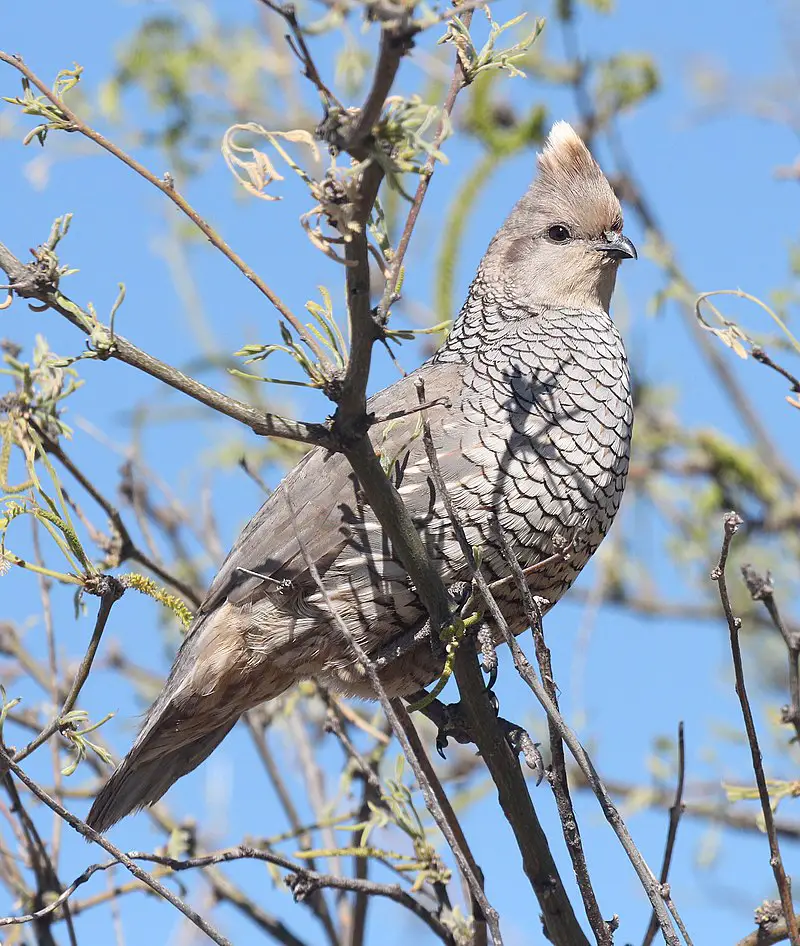
The Scaled quail bird, known as the blue quail or cottontop, is a bluish gray bird found in arid regions of the Southwestern United States to Central Mexico.
It is a member of the New World quail family and an early offshoot of the genus Callipepla that diverged in the Pliocene. The bird’s breast and back feathers have a scaly appearance, which led to its name.
This species is unique in its appearance and is a fascinating addition to the ornithological diversity in the region. Its blue-gray coloration makes it easy to distinguish from other quail species.
The Scaled quail bird is a native bird species in the southwestern United States and is well adapted to surviving in arid conditions.
Its distinct and charming qualities make it a favorite among bird enthusiasts.Scientific classification:
| Kingdom | Animalia |
| Phylum | Chordata |
| Class | Aves |
| Order | Galliformes |
| Family | Odontophoridae |
| Genus | Callipepla |
| Species | C. squamata |
Also Featured In: Birds You’ll Find in the Rio Grande Valley,
29. Northern Harrier
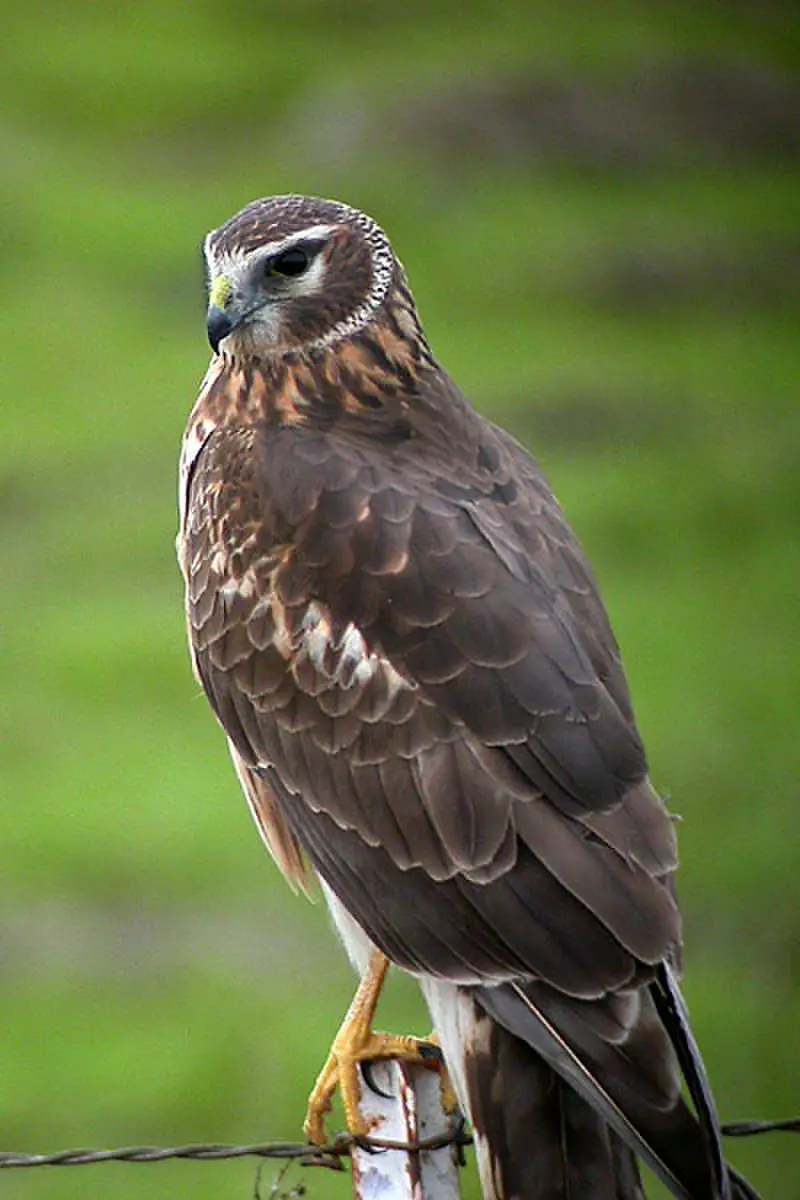
The Northern harrier, also known as the marsh hawk or ring-tailed hawk, is a bird of prey that can be found breeding in the northern parts of the northern hemisphere in Canada and the northernmost USA.
During winter, they migrate to more southerly areas, with breeding birds moving to the southernmost USA, Mexico, and Central America.
This hawk has a distinctive white rump patch that is visible during flight, making it easy to spot.
It is known for its unique hunting behavior, as it searches for prey by flying low over fields and marshes, using its incredible hearing to detect prey beneath the surface.
The Northern harrier feeds on small mammals, birds, and even insects.
They are important both ecologically and culturally and are a common sight for bird watchers in their respective habitats.Scientific classification:
| Kingdom | Animalia |
| Phylum | Chordata |
| Class | Aves |
| Order | Accipitriformes |
| Family | Accipitridae |
| Genus | Circus |
| Species | C. hudsonius |
Also Featured In: Most Common Lake Birds, Birds that can be Seen in Outer Banks
30. Grassland Sparrows
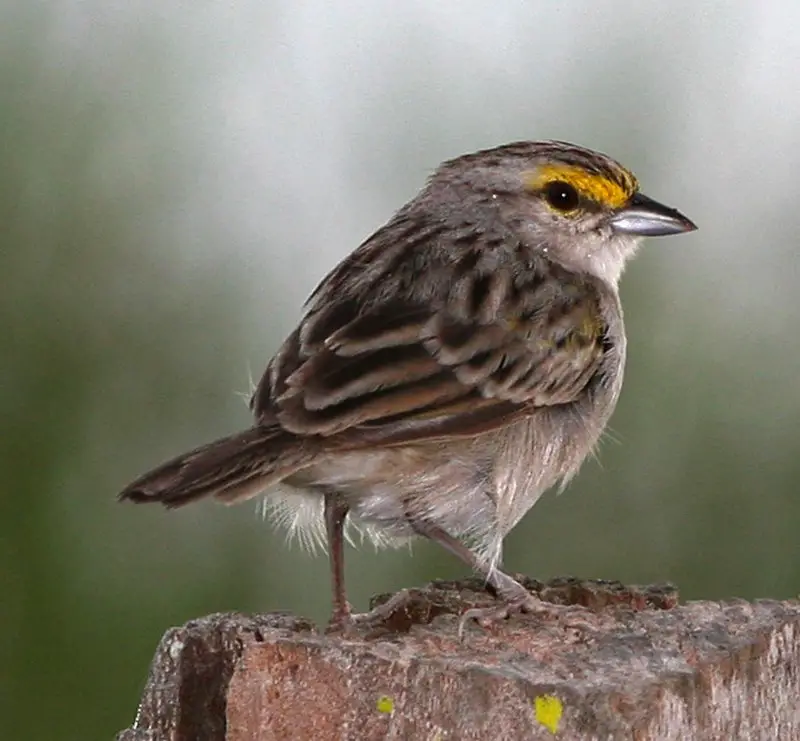
Grassland sparrows are a group of birds belonging to the Passerellidae family. They are commonly found living in grassland habitats across the Americas.
The genus Ammodramus comprises these birds and is Greek for “sand runner”. These sparrows exhibit different mating behaviors, with some being socially monogamous, and both parents taking care of the young.
Others are polygynous with no pair bonding. The Grassland Sparrows are small-sized bird species with unique coloration and behavior that make them interesting to bird watchers and conservationists alike.
They play an essential role in the ecosystem by controlling insect populations and serving as a food source for larger predators.
These birds face several threats, including habitat destruction, pesticide use, and climate change, making their conservation critical.Scientific classification:
| Kingdom | Animalia |
| Phylum | Chordata |
| Class | Aves |
| Order | Passeriformes |
| Family | Passerellidae |
| Genus | Ammodramus Swainson, 1827 |
31. Upland Sandpiper
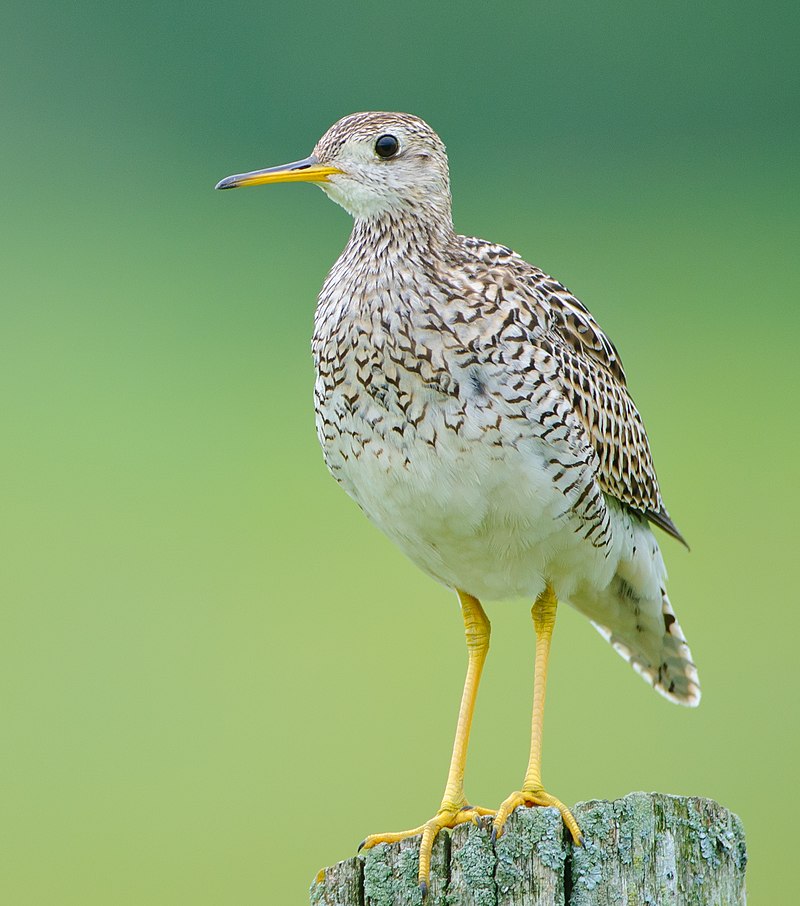
The upland sandpiper, also known as the upland plover, is a bird closely related to curlews. It is the only member of its genus, and its scientific name is Bartramia longicauda.
These birds are sometimes colloquially referred to as papabottes in Louisiana. William Bartram, an American naturalist, is commemorated in the genus name and old common name Bartram’s sandpiper.
These birds are notable for their large size and long tails. They can be found in grasslands and prairies throughout North America, where they nest on the ground and primarily feed on insects.
Unfortunately, they are threatened by habitat loss due to agricultural expansion and conversion to grassland monocultures.
Conservation efforts are underway to protect these unique and important birds.Scientific classification:
| Kingdom | Animalia |
| Phylum | Chordata |
| Class | Aves |
| Order | Charadriiformes |
| Family | Scolopacidae |
| Genus | Bartramia |
| Species | B. longicauda |
Also Featured In: Birds You’ll Find in Night, Large Wyoming Birds You Need to Know
32. Mountain Plover
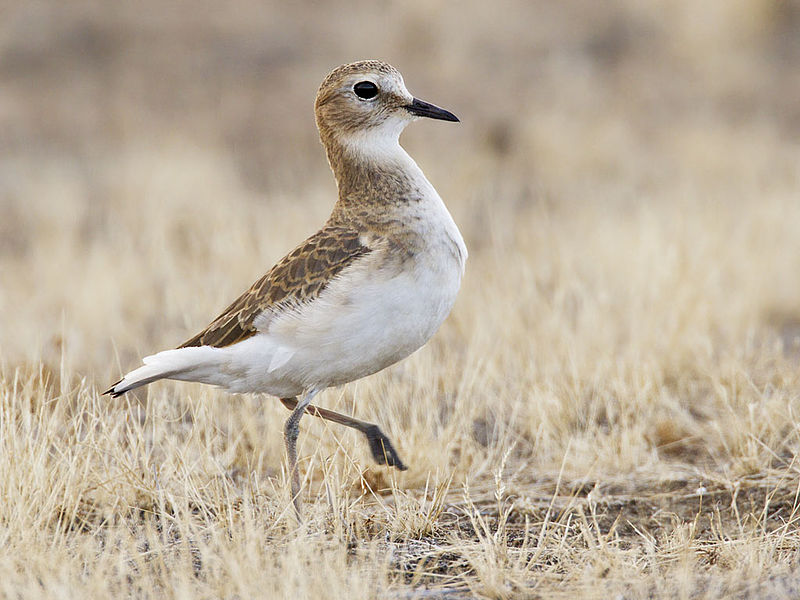
The mountain plover is a ground bird that belongs to the plover family. It is medium-sized and prefers dry habitats with short grass and bare ground. Unlike other plovers, it does not live near water bodies or wet soil.
This bird is misnamed as it is found on level land. The word plover has its origin in the Latin word pluvia, meaning rain. This bird feeds on insects and spiders, and they nest on open land in prairies, steppes, and deserts.
The mountain plover is mostly resident throughout its range and can be found in western North America from Canada to Mexico.
However, habitat loss has caused their population to decline, and they are considered a species of concern.
Efforts are being made to conserve and protect the mountain plover’s habitat to ensure its survival.Scientific classification:
| Kingdom | Animalia |
| Phylum | Chordata |
| Class | Aves |
| Order | Charadriiformes |
| Family | Charadriidae |
| Genus | Charadrius |
| Species | C. montanus |
33. McCown’s Longspur
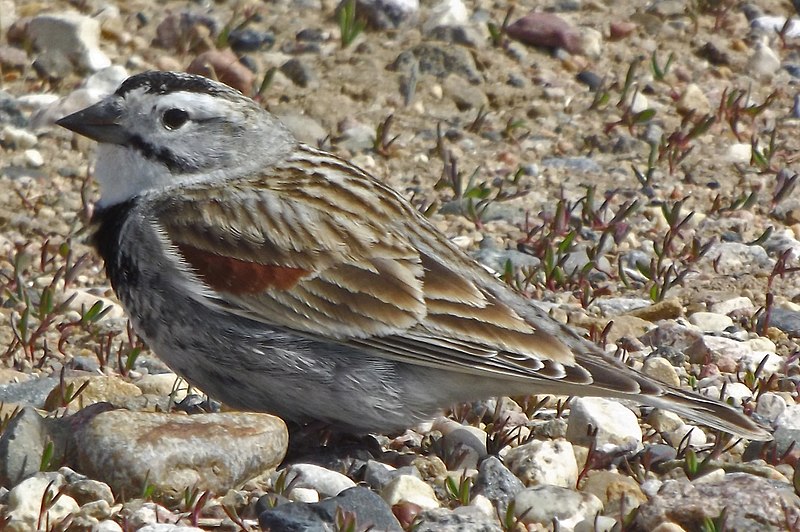
McCown’s Longspur, now known as the Thick-billed Longspur, is a small bird that feeds on the ground. It is part of the Calcariidae family, which includes other longspurs and snow buntings.
The bird is found in North America and is the only species in the Rhynchophanes genus. The American amateur ornithologist George Newbold Lawrence first described the species in 1851.Scientific classification:
| Kingdom | Animalia |
| Phylum | Chordata |
| Class | Aves |
| Order | Passeriformes |
| Family | Calcariidae |
| Genus | Rhynchophanes Baird, 1858 |
| Species | R. mccownii |
34. Circinae
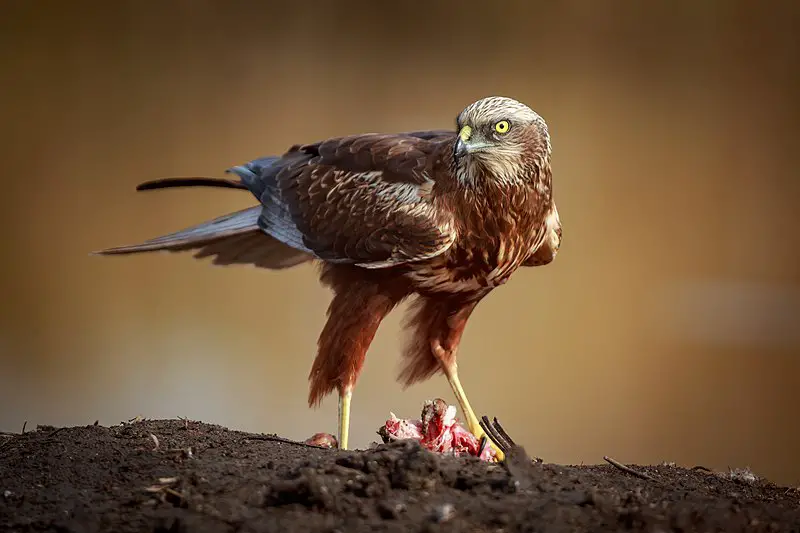
Circinae is a subfamily of Accipitridae, the bird of prey family. Harriers are a type of diurnal hawk that belongs to this subfamily.
These birds are known for flying close to the ground while hunting small mammals, reptiles, or birds.
They have long wings and a long, slim tail that sets them apart from other birds of prey. Their young are sometimes referred to as ring-tail harriers.
Harriers are slow and agile in their movements, making them well-suited for hunting in open areas.
They are leggy birds that are visually striking, sporting an impressive wing span and sharp talons to help them catch their prey.
Despite their keen hunting abilities, harriers face many threats to their survival, including habitat loss and hunting by humans.Scientific classification:
| Kingdom | Animalia |
| Phylum | Chordata |
| Class | Aves |
| Order | Accipitriformes |
| Family | Accipitridae |
| Subfamily | Circinae Bonaparte, 1838 |
| Genus | Circus Lacépède, 1799 |